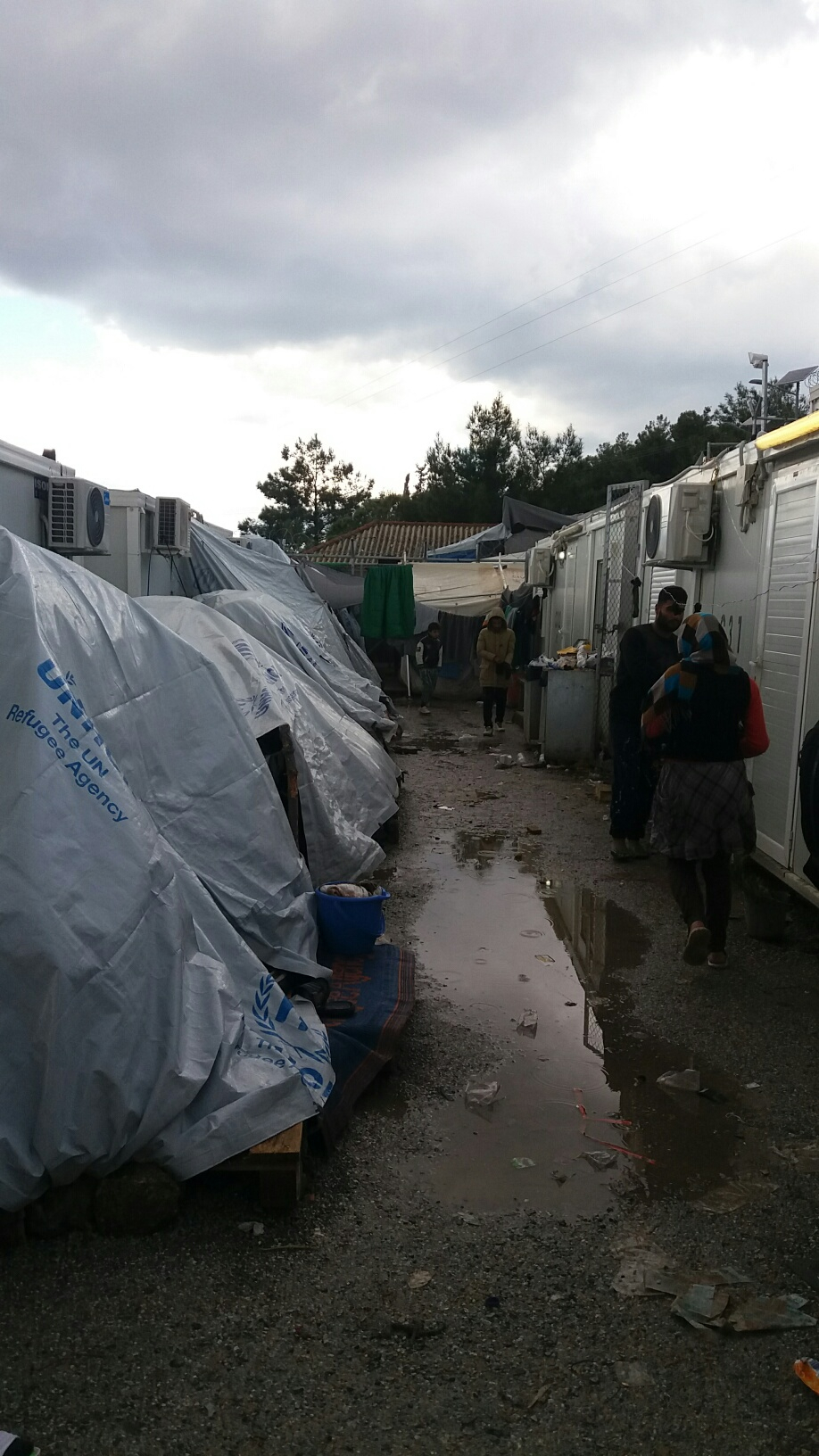
World
21:09, 17-Dec-2018
Inside the Samos refugee camp in Greece, crisis isn't over
Updated
20:44, 20-Dec-2018
By Filio Kontrafouri
02:38

It's a rainy December morning. In a corner next to the police station inside the Vathy Reception and Identification Center, unofficially known as the Samos refugee camp, dozens of asylum seekers wait in line in a small, fenced-off outdoor area to have their picture taken.
They are all Afghans, men, children and women with babies in their arms, all part of the 102 arrivals on the island of Samos the night before. This is the beginning of their identification and registration process by Greek authorities before claiming asylum in Greece. And while a big part of their harrowing journey to Europe is ending, another, just as distressing is beginning.
They will have to live in one of the worst refugee camps across Greece, the so-called "hotspot" of Samos, probably for months, while waiting for their asylum applications to be examined as dictated by the EU-Turkey deal.

An asylum seeker lights fire outside to cook. /CGTN Photo
An asylum seeker lights fire outside to cook. /CGTN Photo
There they will have to cope with severe overcrowding, squalid living conditions and limited access to basic services, like healthcare, before being transferred to the mainland once their asylum claims are processed.
According to the UN Refugee Agency (UNHCR), Afghans are currently the top nationality at the Samos refugee camp (25 percent), followed by those from Iraq (18 percent), Democratic Republic of Congo (12 percent) and Syria (11 percent).
Two-thirds of the camp's population, of around 4,000, have arrived in the last three months. Since September there has been a surge in arrivals on Samos. Close to 1,900 asylum seekers arrived in October alone.
Departures to the mainland have been slow because the Samos hotspot is staffed to process the limited number of asylum seekers it was designed for, a total of 650 people. Moreover, it was because according to UNHCR, which is helping Greek authorities with the transfers, it takes time to match asylum seekers leaving the island with a proper place that can host them in the mainland.

A child stands outside a makeshift shelter. /CGTN Photo
A child stands outside a makeshift shelter. /CGTN Photo
Most camps across Greece are also full because arrivals from its land border with Turkey have surged during last year. The number of refugees Greece is sheltering keeps going up as arrivals continue and currently stands at over 67,000.
As winter arrived, conditions at the camp on Samos deteriorated dramatically. Some 2,500 people there live in tents and makeshift shelters that cannot withstand rough weather.
Constant and heavy rainfall and dropping temperatures have made many asylum seekers get sick, especially the children. Pulmonary infections, joint and bone aches are rife.
The tents, which they must find or buy themselves, if not destroyed by the wind, the water and the mud, become flooded. The clothes hanging remain wet. People are heard coughing across the camp. Many, including children, have been diagnosed with mental health conditions that are exacerbated by these living conditions. When journalists approach them, they all say one thing: "Samos no good." They feel forgotten, and their resentment is spilling out.

File photo: 2,500 asylum seekers inside and outside the Samos refugee camp live in tents and makeshift shelters. /CGTN Photo
File photo: 2,500 asylum seekers inside and outside the Samos refugee camp live in tents and makeshift shelters. /CGTN Photo
The camp is managed by the Reception and Identification Service, under the Ministry of Migration Policy. No aid organizations operate inside the camp, and only a handful are on the island to provide limited services.
In November, UNHCR distributed everything that was left in its emergency stock, 3,500 sleeping bags, hygiene and baby kits. But it has been far from enough. The needs are so high that volunteers are forced to distribute the few clothes, plastic covers and even tents they receive from donations at night, far away from the camp and in pre-arranged meetings because they can only help very few.

Tents have been set up even along the walkways between the containers. /CGTN Photo
Tents have been set up even along the walkways between the containers. /CGTN Photo
Plans for a new camp with a capacity of 1,200 are in the works, but it will take months before these plans materialize. Until then, if the camp is not decongested, it is not only the thousands of refugees that will be languishing under deplorable conditions.
The local community, which has been showing a great deal of solidarity for years, has been shouldering a disproportionate burden. That solidarity is starting to become tested as the camp is only a few hundred meters away from the town of Vathy, the capital of Samos with a population of only 6,000 – a number not too far from the number of refugees on the island.
While for most, the 2015 refugee crisis has ended. All it takes is one look at this small corner of the Eastern Aegean Sea to realize that it has not. And as most asylum seekers do not plan or want to stay in Greece but continue to other northern European countries, sooner or later, Europe may have to realize it too.

SITEMAP
Copyright © 2018 CGTN. Beijing ICP prepared NO.16065310-3
Copyright © 2018 CGTN. Beijing ICP prepared NO.16065310-3